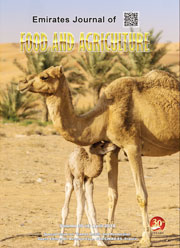HEAT TOLERANCE OF PORTUGUESE OLD BREAD WHEAT VARIETIES
DOI:
https://doi.org/10.9755/ejfa.v26i2.16761Keywords:
High temperature, Photosynthetic activity, Membrane integrity, Triticum aestivum, YieldAbstract
Wheat is a major staple crop, and its grain yield is affected by heat stress. Such environmental constraint frequently occurs in the main Portuguese wheat producing regions. The aim of this work was to evaluate the impact of high temperatures after anthesis on gas exchanges, chlorophyll a fluorescence, membrane integrity and yield in nine Portuguese old bread wheat varieties. Photosynthetic rate (Pn) reductions occurred in Gentil Rosso, Grécia and Nabão and may result from inactivation of PSII activity, as indicated by decreases in photochemical efficiency under light (Fv'/Fm') and in quantum yield of electron transport (?e). Results denoted an enhancement/maintenance of photosynthetic ability under heat, expressed by stable stomatal conductance (gs) and higher water use efficiency (WUE) in MEQ and Restauraçã o, increased Pn in MEB and Restauraçã o, and Pn stability in Ruivo. Reduced membrane damage (lower leakage) in Ruivo and MEQ suggested a higher protoplasmic tolerance to heat in these varieties. Control plants of MEQ also presented the highest lipid amount and the less unsaturated membrane lipids (low double bond index), and these traits were unaffected by heat. Ruivo denoted a stimulation of lipid biosynthesis which could have positive implications on thermal tolerance. Increased Pn and WUE, stable gs and abundant lipids in control plants (MEQ, T94, MEB, Restauraçã o) corresponded to kernel yield increases under heat. Physiological traits are expected to contribute to Portuguese wheat breeding programs towards high temperature tolerance.










 .
. 